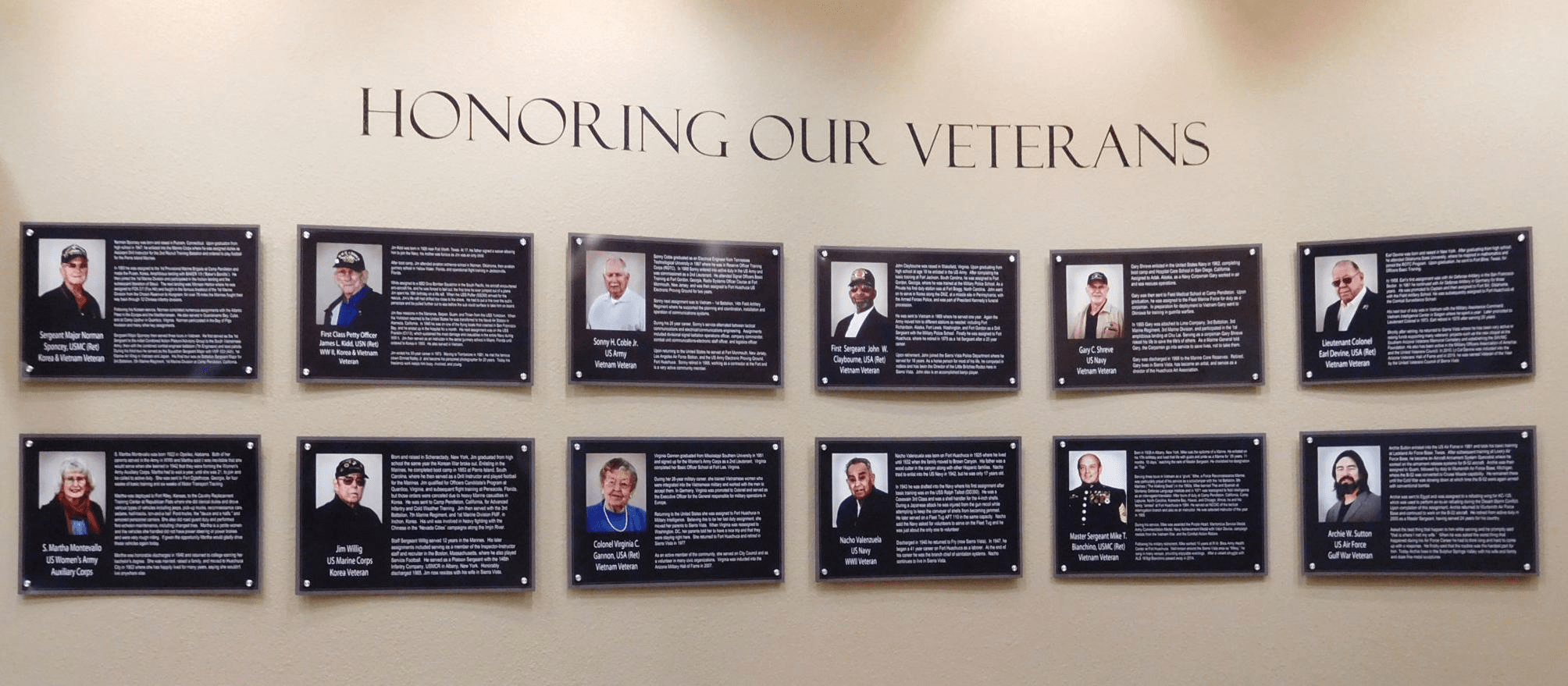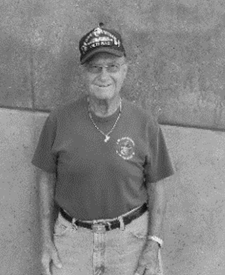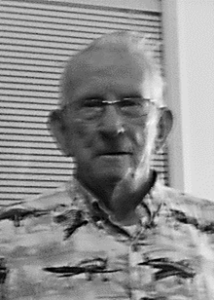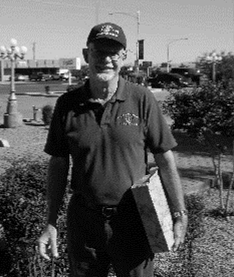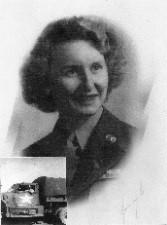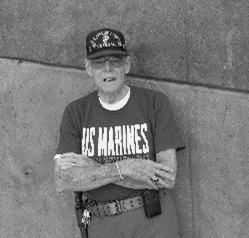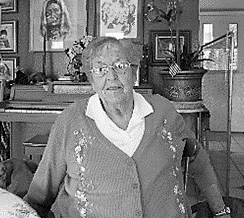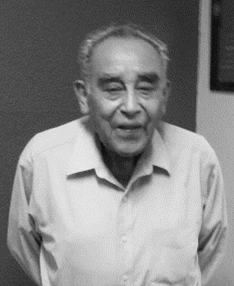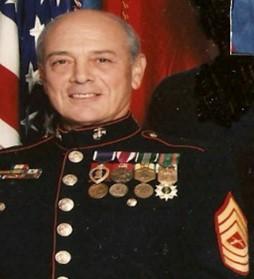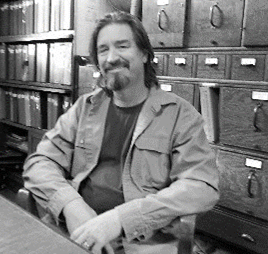Norman Sponcey, US Marine Corps
Veteran Veteran
Norman Sponcey was born and raised in Putnam, Connecticut. Upon graduation from high school in 1947, he enlisted into the Marine Corps where he was assigned duties as Assistant Drill Instructor for the 2nd Recruit Training Battalion and ordered to play football for the Parris Island Marines.
In 1950 he was assigned to the 1st Provisional Marine Brigade at Camp Pendleton and made the Pusan, Korea, Amphibious landing with BAKER 1/5 (“Baker’s Bandits”). He then joined the 1st Marine Division and participated in the Inchon landing and the subsequent liberation of Seoul. The next landing was Wonsan Harbor where he was assigned to FOX 2/7 (Fox Hill) and fought in the famous breakout of the 1st Marine Division from the Chosin Reservoir to Hungnam; for over 78 miles the Marines fought their way back through 12 Chinese infantry divisions.
Following his Korean service, Norman completed numerous assignments with the Atlantic Fleet in the Europe and the Mediterranean. He also served in Guantanamo Bay, Cuba, and at Camp Upshur in Quantico, Virginia. Norman participated in the Bay of Pigs Invasion and many other key assignments.
Sergeant Major Sponcey then served three tours in Vietnam. He first served as the 1st Sergeant to the initial Combined Action Platoon/Advisory Group to the South Vietnamese Army; then with the combined combat engineer battalion (7th Engineers) and lead patrols. During his third tour he served as the Squadron Sergeant Major with VMF 533 (AW), 1st Marine Air Wing in Vietnam and Japan. His final tour was as Battalion Sergeant Major for 3rd Battalion, 5th Marine Regiment, 1st Marine Division at Camp Pendleton, California.
Norman served 26 years in the Marines and is now retired, living with his wife in Sierra Vista.
James L. Kidd, US Navy
WW II, Korea & Vietnam Veteran
Jim Kidd was born in 1926 near Fort Worth. Texas. At 17, his father signed a waiver allowing him to join the Navy; his mother was furious as Jim was an only child.
After boot camp, Jim attended aviation ordnance school in Norman, Oklahoma, then aviation gunnery school in Yellow Water, Florida, and operational flight training in Jacksonville, Florida.
While assigned to a SBD Dive Bomber Squadron in the South Pacific, his aircraft encountered anti-aircraft fire, and he was forced to bail out; the first time he ever jumped out of a plane. Jim spent his 18th birthday on a life raft. When the USS Puffer (SS268) arrived for the rescue, Jim’s life raft had drifted too close to the shore. He had to put a line over the sub’s periscope and be pulled further out to sea before the sub could surface to take him on board.
Jim flew missions in the Marianas, Saipan, Guam, and Tinian from the USS Yorktown. When the Yorktown returned to the United States he was transferred to the Naval Air Station in Alameda, California. In 1945 he was on one of the flying boats that crashed in San Francisco Bay, and he ended up in the hospital for a month. His next assignment was on the USS Franklin (CV13), which sustained the most damage and casualties in the entire Navy during WW II. Jim then served as an instructor in the aerial gunnery school in Miami, Florida until ordered to Korea in 1950. He also served in Vietnam.
Jim ended his 30-year career in 1973. Moving to Tombstone in 1981, he met the famous clown Emmet Kelley Jr. and became his personnel photographer for 20 years. Today his freelance work keeps him busy, involved, and young.
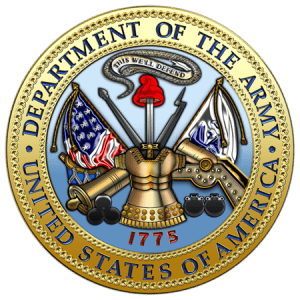
Sonny H. Coble Jr., US Army
Vietnam Veteran
Sonny Coble graduated as an Electrical Engineer from Tennessee Technological University in 1967 where he was in Reserve Officer Training Corps (ROTC). In 1968 Sonny entered into active duty in the US Army and was commissioned as a 2nd Lieutenant. He attended Signal Officers Basic Training at Fort Gordon, Georgia, Radio Systems Officer Course at Fort Monmouth, New Jersey, and was then assigned to Fort Huachuca US Electronic Proving Ground for two years.
Sonny next assignment was to Vietnam – 1st Battalion, 14th Field Artillery Regiment where he supported the planning and coordination, installation and operation of communications systems.
During his 20 year career, Sonny’s service alternated between tactical communications and electrical/communications engineering. Assignments included divisional signal battalion operations officer, company commander, combat unit communications-electronic staff officer, and logistics officer.
Upon returning to the United States he served at Fort Monmouth, New Jersey, Los Angeles Air Force Station, and the U. S. Army Electronic Proving Ground, Fort Huachuca. Sonny retired in 1988, working as a contractor at the Fort and is a very active community member.

John W. Claybourne, US Army
Vietnam Veteran
John Claybourne was raised in Wakefield, Virginia. Upon graduating from high school at age 18 he enlisted in the US Army. After completing his basic training at Fort Jackson, South Carolina, he was assigned to Fort Gordon, Georgia, where he was trained at the Military Police School. As a Private his first duty station was at Fort Bragg NC. John went on to serve in Korea along the DMZ, at a missile site in Pennsylvania, with the Armed Forces Police and was part of President Kennedy’s funeral procession.
He was sent to Vietnam in 1968 where he served one year. Again the Army moved him to different stations as needed: including Fort Richardson, Alaska, Fort Lewis, Washington, and Fort Gordon as a Drill Sergeant with the Military Police School. Finally he was assigned to Fort Huachuca, Arizona, where he retired in 1979 as a First Sergeant after a 20 year career.
Upon retirement, John joined the Sierra Vista Police Department where he served for 18 years. As a horse person for most of his life, he competed in rodeos and has been the Director of the Little Britches Rodeo here in Sierra Vista. John also is an accomplished banjo player.
Gary C. Shreve, US Navy
Vietnam Veteran
Gary Shreve enlisted in the United States Navy in 1962, completing boot camp and Hospital Care School in San Diego, California. Assigned to Adak, Alaska, as a Navy Corpsman Gary worked in air and sea rescues operations.
Gary was then sent to Field Medical School at Camp Pendleton. Upon graduation, he was assigned to the Fleet Marine Force for duty as a corpsman. In preparation for deployment to Vietnam Gary went to Okinawa for training in guerilla warfare.
In 1965 Gary was attached to Lima Company, 3rd Battalion, 3rd Marine Regiment, 3rd Marine Division, and participated in the 1st amphibious landing at Chu Lai. Serving as a corpsman Gary Shreve risked his life to save the life’s of others. As a Marine General told Gary, the Corpsmen go into service to saves lives, not to take them.
Gary was discharged in 1966 to the Marine Corps Reserves. Retired, Gary lives in Sierra Vista, has become an artist, and serves as a director of the Huachuca Art Association.



